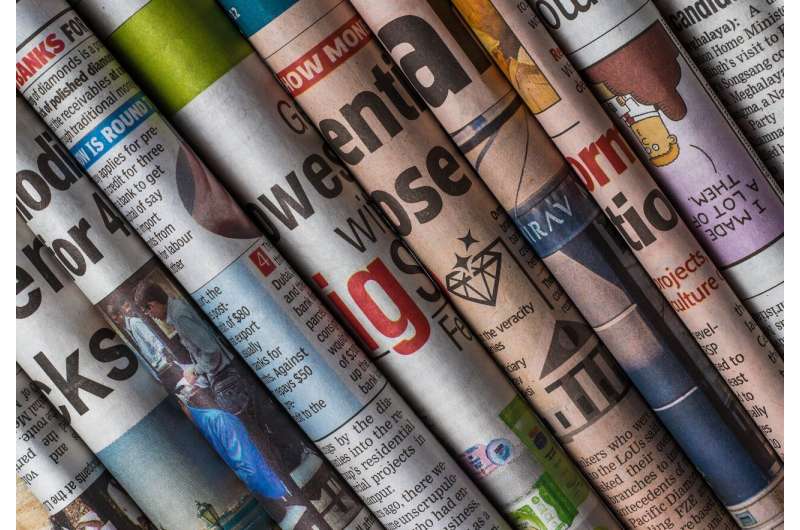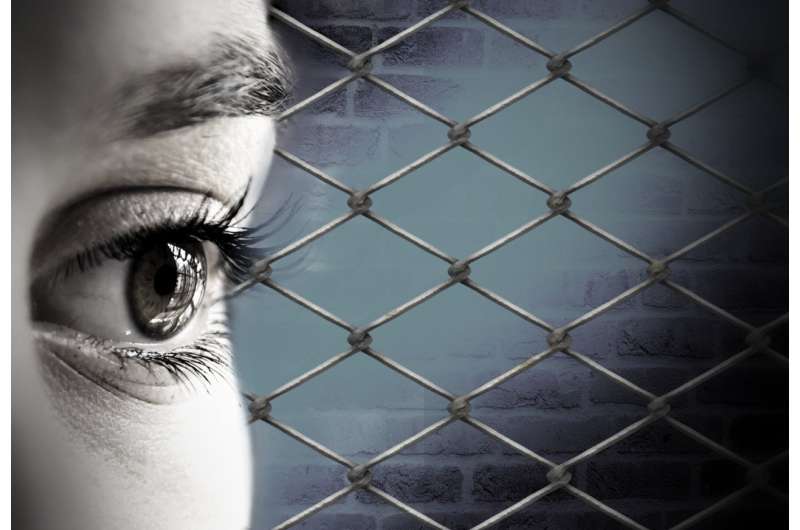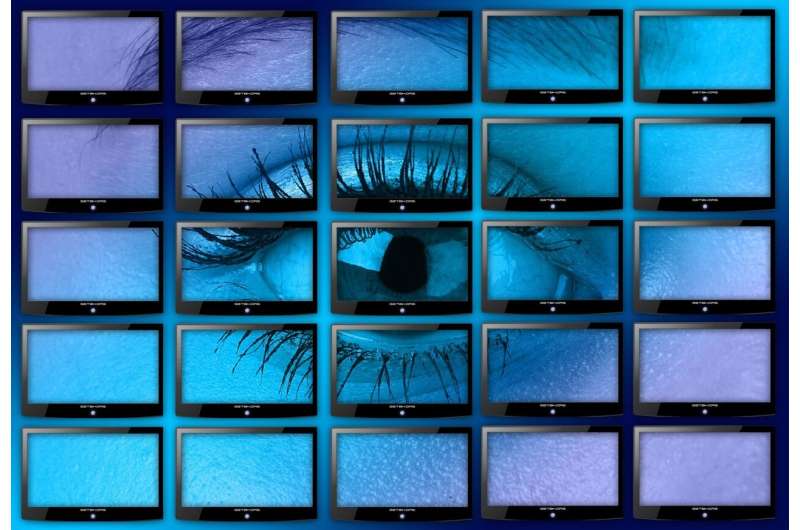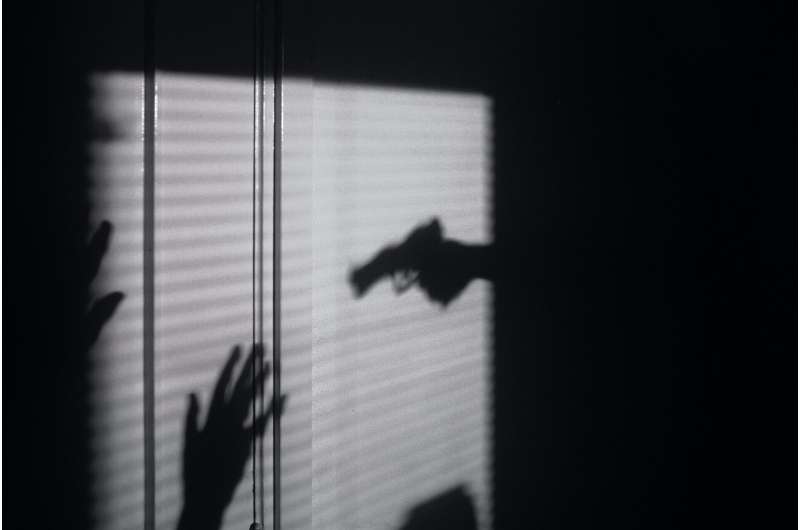Our attitudes and emotions are affected by how the media describes migration

News that describes migration in a positive context, makes us become more positive about immigration and vice versa. This is stated by Nora Theorin in a new dissertation on media and migration at the Department of Journalism, Media and Communication, University of Gothenburg.
Media are often said to play a central role when it comes to shaping the perceptions people have of migration, but our knowledge is limited about HOW and WHEN they influence people, and why.
Nora Theorin has investigated what it looks like in six European countries to see if there are any common patterns and mechanisms; countries that differ greatly in their attitudes toward migration: Poland, Spain, the United Kingdom, Sweden, Germany and Hungary.
Differences between traditional and alternative media
The survey in Sweden showed that traditional news media did not seem to have influenced users' attitudes toward migration to any great extent, despite the fact that it was carried out during 2014–2016, when an exceptionally large number of refugees (160,000) came to Sweden.
On the other hand, it emerged that the use of certain media—those with a pronounced political orientation—had a greater influence. Those who followed the alternative right-wing site Avpixlat (now Samhällsnytt) became more negative about immigration from countries outside the EU, while those who read the left-wing ETC became more positive.
"You need to be aware of this difference when talking about public opinion—and the influence of the media—in migration issues, especially since media with a clear political, especially immigration-critical, profile have increasingly established themselves as sources of information in many Western democracies," says Nora Theorin.
Emotions matter
To find out if it matters how the media portrays immigrants and immigration, she conducted an experiment in which 5,510 participants in the different countries got to take part of both positive and negative articles about immigrants—something that aroused different kinds of feelings.
The different angles (or frames) led to different reactions—those where immigrants appeared in a positive context reduced the readers' negative emotions, which in turn also led to more positive attitudes. At the same time, the positive emotions of those who read negative articles decreased, and they also had more negative attitudes toward immigration.
"Emotions seem to be an important mechanism and can function as so-called mediating variables or factors that explain why people are influenced by the media's representations of immigration," says Nora Theorin.
Media use and threats
Internationally, it also turned out that the media in different ways seem to trigger people's perceptions of immigration as a threat to the economy, security and culture, depending on where in the world the migrants come from.
Immigration from outside Europe was mainly associated with cultural threats, while the only perceived negative effect of European migration was on the economy.
"But the results differ so much between the countries that it is not possible to talk about any universal influence or common patterns," says Nora Theorin.
In general, the effect of the media was more limited than she expected, both in Sweden and internationally. Something Theorin believes may be due to the fact that many people, long before the study, had already established such strong views on migration that they are difficult to change.
Refugees in the media: How the most commonly used images make viewers dehumanise them

When the Syrian refugee crisis began in 2011, the journeys of thousands of people fleeing their home country to cross the Mediterranean were widely documented in the media. But the public response was tepid until 2015, when a photograph of drowned Syrian toddler Alan Kurdi on a Turkish beach was printed in media around the world. The photo prompted international responses, a change of EU policy on refugees, and a surge in donations to charities working with refugees.
Images shape our perceptions of the world and have the capacity to become political forces themselves. While more refugees risk their lives to cross the English Channel and the Mediterranean, not to mention the Belarus-Poland border, our research has found that the photos of these populations in the media affect how people view and respond to migration issues.
This phenomenon is described in social psychology as the "identifiable victim effect." People engage differently with words and images concerning the suffering of a single individual rather than that of large groups. We are willing to offer greater aid to a single victim under hardship than to a group of people with the same need. Increased charity donations are an example of this.
Yet in the mainstream media, images of identifiable victims are the exception rather than the norm. In the context of the Syrian refugee crisis, the majority of news images in western media depict refugees as anonymous, faceless masses. These may either render audiences numb to the subjects' hardship or simply fail to shift their attitudes or behaviors, as past research suggests.
Dehumanization
In set of recent studies, we showed media images of refugees to nearly 4,000 European citizens. We exposed them to images of either large groups, in which individuals are not identifiable, or small groups of identifiable refugees. We found that viewers dehumanized refugees more strongly when they were exposed to images of them in large groups.
We reached this conclusion by asking participants to tell us the extent to which they think that refugees are capable of experiencing certain emotions. We did this because an important dimension of dehumanization is considering others as being less capable of experiencing secondary emotions that typically distinguish humans from animals, such as tenderness, guilt and compassion (as opposed to primary emotions that are shared with animals such as fear, anger and joy).
We found that the participants who saw images of refugees in large groups attributed fewer secondary emotions to them. Interestingly, we did not observe this difference when participants saw images of large groups of survivors of natural disasters.
We also looked at another distinguishing feature of these images: whether the subjects were depicted crossing a body of water or traveling by land. One of the most striking aspects of the imagery of refugee journeys has been their crossing of the Mediterranean Sea—being rescued or having drowned.
Social scientists have speculated that the visual and linguistic portrayal of refugees using metaphors of water (waves, tides and floods) reinforces the stereotype of refugees as potentially threatening, uncontrollable agents.
In our study, the visual narrative of depicting large groups of refugees in the sea resulted in even greater dehumanization. This suggests that current visual representations of refugees emphasize a security issue rather than a humanitarian debate—refugees are depicted as "being a crisis" for host nations, rather than finding themselves "in a crisis."
Turning emotion to action
We found that not only do these differences in images affect our attitudes toward refugees, they also influence our behavior and action. We found that participants who had been exposed to images of large groups of refugees were also more likely to endorse anti-refugee petitions and less likely to endorse pro-refugee petitions.
We also tested whether exposure to these images affected people's support for political leaders. We found that viewing images of large groups was associated with increased support for more dominant and less trustworthy-looking political leaders.
Interestingly, in our research, it was not the emotions that viewers attributed to the people in the photographs that drove political effects. Instead, the driving factor seemed to be the specific emotions that the viewers themselves experienced (such as reduced pity) when looking at the images of large groups.
There are no neutral ways to visually depict human beings. Neither the medium of photography itself can afford such neutrality, nor the photographers, the publishers or the viewers themselves.
The decision of what photos to publish is often made by editors who are exposed daily to many images of human suffering. Our research shows that these decisions should consider both the likely emotions audiences will "see" in the images, but also the emotions they will "feel."Images are not always worth a thousand words
Provided by The Conversation
This article is republished from The Conversation under a Creative Commons license. Read the original article.![]()
Study shows we can reduce people's bias against non-native speakers

Researchers from Royal Holloway, University of London, have published a new study in Cognitive Science that shows people are more likely to believe information given to them by a native speaker rather than those with a foreign accent, but that this bias can be reduced.
Whenever people process information, they evaluate it by relying not only on its content but also how easy it is to process. The new study carried out by academics from the Department of Psychology at Royal Holloway shows that it is harder to process foreign-accented speech. As a result, people believe information less when it's spoken in a foreign accent, but the study found that more exposure to foreign accents can reduce this bias by improving how individuals process the accent.
The results demonstrate how cognitive aspects of processing language can influence attitudes. In the study, participants listened to trivia statements by native and non-native speakers and rated how likely the statements were to be true.
Participants believed the statements less when they were provided by non-native speakers, but if they had been previously exposed to the foreign accent, they showed a smaller bias against the non-native speakers.
Dr. Shiri Lev-Ari from the Department of Psychology at Royal Holloway, said: "Despite interactions between native and non-native speakers being very common in today's society, prior research has indicated that individuals have biases that can lead them to treat the speech of non-native speakers less favorably.
"The results from our study are interesting because they highlight that people can reduce the bias they have against non-native speakers by having more exposure to foreign accents. This suggests that diversity can reduce discrimination against non-native speakers."
"Exposing individuals to foreign accent increases their trust in what non-native speakers say," was carried out by Dr. Shiri Lev Ari from the Department of Psychology and Katarzyna Boduch-Grabka, formerly from the Department of Psychology at Royal Holloway.Recognizing foreign accents helps brains process accented speech
More information: Katarzyna Boduch‐Grabka et al, Exposing Individuals to Foreign Accent Increases their Trust in What Nonnative Speakers Say, Cognitive Science (2021). DOI: 10.1111/cogs.13064
Journal information: Cognitive Science
Provided by Royal Holloway, University of London





